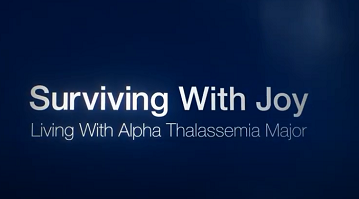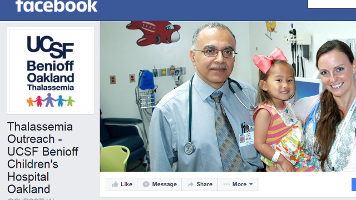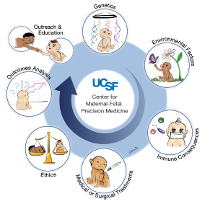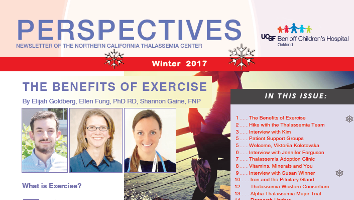TABLE OF CONTENTS
| 1 | Introduction | |
|---|---|---|
| 1.1 | Common definitions used in thalassemia | |
| 2 | DNA Testing Prior to Treatment | |
| 3 | Diagnosis of Thalassemia | |
| 4 | Blood Transfusions | |
| 4.1 | Assessing the need for routine transfusions | |
| 4.2 | Baseline laboratory tests prior to regular transfusions | |
| 4.3 | Transfusion administration and monitoring | |
| 4.3.1 | Transfusion facility | |
| 4.3.2 | Type of blood product | |
| 4.3.3 | Target hemoglobin and frequency of transfusions | |
| 4.4 | Adverse reactions to transfusions | |
| 4.5 | Splenectomy | |
| 4.6 | Thromboembolic Disease | |
| 5 | Iron Overload and Chelation Therapy | |
| 5.1 | Initiation of chelation | |
| 5.2 | Treatment with iron chelators | |
| 5.2.1 | Treatment with deferoxamine (Desferal) | |
| 5.2.2 | Treatment with deferasirox (Exjade) | |
| 5.2.3 | Treatment with deferiprone (L1/Ferriprox) | |
| 5.3 | Patients with significant iron overload | |
| 5.3.1 | High-dose, continuous deferoxamine | |
| 5.3.2 | Combination therapy: deferoxamine and deferasirox | |
| 5.3.3 | Combination therapy: deferoxamine and deferiprone | |
| 6 | The Use of Imaging to Monitor Iron Overload and Chelation Therapy | |
| 6.1 | Monitoring the efficacy of chelation therapy in the presence of iron cardiomyopathy | |
| 7 | Assessment of Chelator Side Effects and Toxicity | |
| 7.1 | Audiology | |
| 7.2 | Ophthalmology | |
| 7.3 | Nephrology | |
| 7.4 | Neutropenia | |
| 7.5 | Growth | |
| 7.6 | Local and allergic reactions | |
| 7.7 | Over-chelation | |
| 8 | Liver and Gall Bladder Diseases | |
| 8.1 | Screening for hepatic dysfunction | |
| 8.2 | Monitoring patients with documented hepatitis or hepatic dysfunction | |
| 8.3 | Evaluation and treatment for hepatitis C | |
| 8.4 | Evaluation and treatment for hepatitis B | |
| 8.5 | Gall bladder disease | |
| 9 | Endocrine Dysfunction | |
| 9.1 | Routine endocrine screening | |
| 9.2 | Specific endocrinopathies: testing and evaluation | |
| 9.2.1 | Diabetes mellitus | |
| 9.2.2 | Low bone mass (osteoporosis) | |
| 9.2.3 | Growth hormone deficiency | |
| 9.2.4 | Hypogonadism | |
| 9.2.5 | Hypothyroidism | |
| 9.2.6 | Hypoparathyroidism | |
| 9.2.7 | Adrenal insufficiency | |
| 10 | Cardiac Dysfunction | |
| 10.1 | Cardiac evaluation | |
| 10.2 | Echocardiography standards | |
| 10.3 | Treatment of established heart failure | |
| 10.4 | Pulmonary hypertension | |
| 10.5 | Treatment of pulmonary hypertension | |
| 11 | Pulmonary Care | |
| 12 | Pain Syndrome in Thalassemia | |
| 13 | Hematopoietic Cell Transplantation | |
| 13.1 | Iron overload after HCT | |
| 13.2 | Experimental HCT | |
| 13.3 | Experimental drug therapy to increase fetal hemoglobin | |
| 14 | Acute Infection | |
| 15 | Dental Evaluation | |
| 16 | Nutrition | |
| 17 | Vaccinations | |
| 18 | Fertility and Pregnancy in Thalassemia | |
| 18.1 | Pregnancy | |
| 19 | Thalassemia Intermedia | |
| 19.1 | Nontransfused thalassemia intermedia | |
| 19.1.1 | Growth and development | |
| 19.1.2 | Extramedullary erythropoiesis | |
| 19.1.3 | Endocrinopathies | |
| 19.1.4 | Cardiopulmonary assessment | |
| 19.1.5 | Considerations for transfusions | |
| 19.1.6 | Considerations for splenectomy | |
| 19.1.7 | Assessment of iron overload | |
| 20 | Hemoglobin H Disease and Its Variants | |
| 20.1 | Diagnosis | |
| 20.2 | Hemoglobin H deletion | |
| 20.3 | Recommendations for care | |
| 21 | Thalassemia Research | |
| 22 | Psychosocial Support | |
| 22.1 | Child life services | |
| 22.2 | Psychological services | |
| 22.3 | Social services | |
| 22.4 | Genetic counseling | |
| 23 | Genetic Testing | |
| 24 | General Timetable for Clinical and Laboratory Evaluation | |
| 25 | Authors | |
| 26 | Support | |
| 27 | References |












